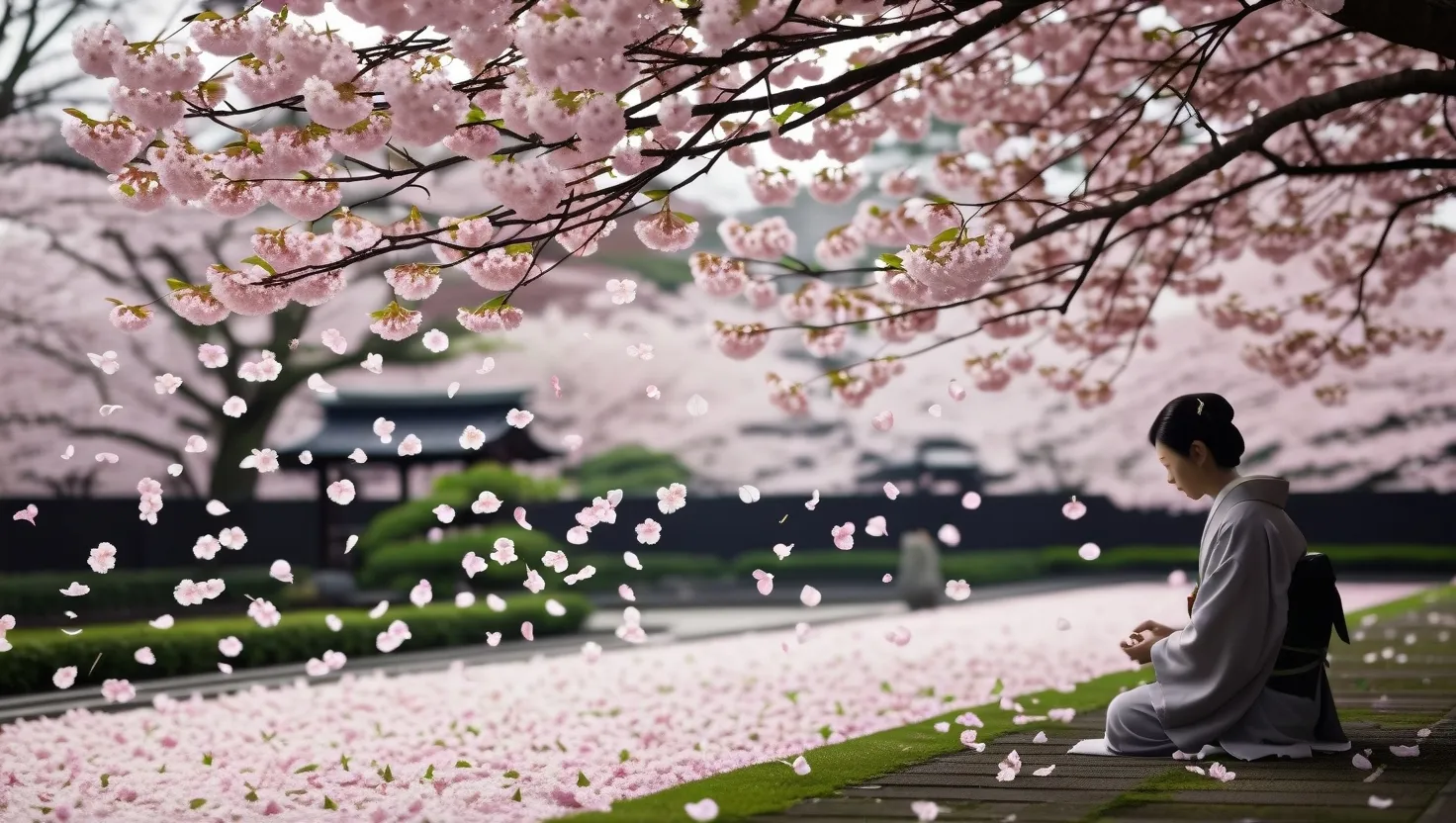In the heart of Japanese culture lies a profound and nuanced concept known as mono no aware, a phrase that encapsulates the bittersweet appreciation of life’s impermanence. This aesthetic and philosophical idea is more than just a sentiment; it is a way of life that influences art, literature, and daily interactions, offering a unique perspective on beauty, loss, and the passage of time.
To understand mono no aware, one must first grasp the literal translation of the phrase: “the pathos of things” or “the sorrow of things.” However, this translation barely scratches the surface of its depth. It is an emotion that falls somewhere between sorrow and serenity, a feeling that arises from the realization that everything in life is transient. This impermanence is not something to be mourned, but rather cherished and appreciated for the fleeting beauty it brings.
Imagine standing under a blooming cherry blossom tree, the delicate petals dancing in the gentle breeze. This moment, though brief, is filled with an intense beauty that evokes a mix of emotions. There is a sense of joy in witnessing such beauty, but also a tinge of sadness knowing that this moment will soon pass. This is mono no aware in action – the acknowledgment and appreciation of the transience of life.
This concept originated in Japan’s Heian era, a period strongly influenced by Buddhism. The idea of impermanence, or mujō, is central to Buddhist teachings, emphasizing that everything in existence is temporary and ephemeral. Mono no aware takes this idea and turns it into a deeply felt emotion, one that is woven into the fabric of Japanese literature, art, and daily life.
In literature, mono no aware is often depicted through the stories of fleeting love, the passing of seasons, and the inevitability of change. For example, the classic novel The Tale of Genji, written in the 11th century, is filled with moments that evoke this sentiment. The novel’s author, Murasaki Shikibu, masterfully captures the bittersweet nature of life’s transience, making the reader feel the weight of impermanence.
In art, mono no aware is reflected in the delicate brushstrokes of traditional Japanese paintings, the ephemeral nature of cherry blossoms, and the serene landscapes that capture the fleeting moments of nature. Artists often use natural elements like autumn leaves, the sun, and the moon to convey this sense of transience. Each piece is a reminder that beauty is temporary and should be cherished in its moment.
This concept extends beyond art and literature, influencing how people live their daily lives. It encourages a mindset of minimalism, not in the sense of renouncing all possessions, but in understanding that true control is an illusion. Life is full of unexpected events – friends pass away, political crises erupt, and possessions break. Mono no aware teaches us to appreciate the fragility of life, making each moment infinitely precious.
For instance, consider the story of a person who saves a special bottle of wine for a significant occasion, only to find that the moment never feels special enough. This is a reflection of mono no aware – the realization that the true beauty lies not in the possession itself, but in the appreciation of its transience. This appreciation doesn’t require ownership; it requires a deep connection to the world around us.
In modern times, mono no aware continues to influence Japanese culture. It is seen in films and literature that contrast past and present, highlighting the passage of time. Authors like Kazuo Ishiguro, known for his works such as Never Let Me Go and The Remains of the Day, use this concept to drive their storytelling, reflecting on the bittersweet nature of life’s impermanence.
This philosophy also shapes emotional intelligence in a unique way. It teaches us to embrace the impermanence of life, not with despair, but with a calm joy. There is a sadness in knowing that things will pass, but there is also a profound appreciation for the beauty that exists in that moment. This balance between sorrow and serenity is what makes mono no aware so powerful.
In a world that is increasingly fast-paced and global, mono no aware offers valuable insights for coping with change and uncertainty. It reminds us to cherish the present, to appreciate the fleeting moments of beauty that surround us. Whether it is the first snowfall of winter, the last leaf of autumn, or the brief bloom of cherry blossoms, each moment is a reminder of the transience of life.
This concept can also be applied to our relationships. Mono no aware encourages us to cherish the time we have with loved ones, to appreciate the fleeting nature of human connections. It reminds us that every moment with someone is precious, and that the beauty of these relationships lies in their impermanence.
In conclusion, mono no aware is more than just a concept; it is a way of living that finds beauty in the impermanence of life. It is a reminder to appreciate the fleeting moments, to cherish the beauty that surrounds us, and to find peace in the transience of existence. As we navigate the complexities of our modern world, embracing mono no aware can provide a profound sense of calm and appreciation, helping us to live more intentionally and deeply.
By incorporating this philosophy into our daily lives, we can develop a deeper connection to the world around us. We can learn to appreciate the small, often overlooked moments that make life so beautiful. Whether it is the sound of raindrops on the roof, the sight of a lonely animal, or the memory of a past love, each of these moments holds a beauty that is worth cherishing.
In the end, mono no aware is not just about acknowledging the impermanence of life; it is about finding the beauty in that impermanence. It is a call to live in the present, to appreciate the fleeting nature of existence, and to find peace in the ever-changing world around us. This subtle worldview can shape our cultural practices, our emotional intelligence, and our very way of living, offering us a unique and profound perspective on the beauty and the passage of time.






